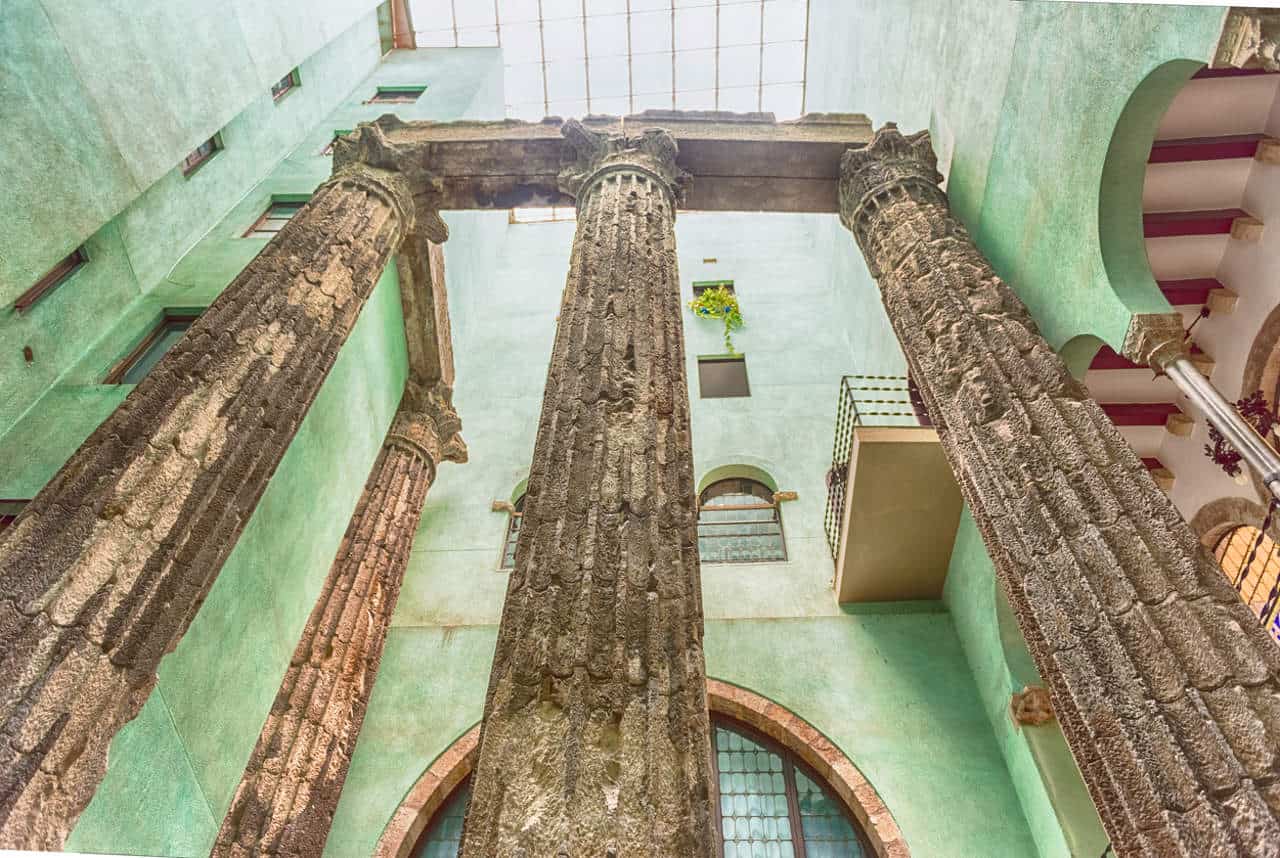
Barcino, or rather Barcelona, is a city that breathes history in every corner. Have you ever heard of the Born market? It turns out that when they tried to rebuild it, they came across a Roman temple, thus stopping the work. But did you know that there are even more hidden vestiges? Read on, we’ll tell you all about it today!
A legacy as old as a Roman temple
The first thing you should know is that the old town of Barcelona is not just a maze of narrow streets and tourist stores. Within its walls hides a fascinating history. And if you venture into some of its buildings, you might come across something surprising: a temple dedicated to Augustus.
The origin of Barcino
Before Barcino was officially constituted in 15 B.C., the Romans settled on Mount Táber. There, with the approval of Caesar Augustus, they founded a colony in his honor, the Colonia Iulia Augusta Faventia Paterna Barcino. Over time, this colony grew into a city.
However, Mount Táber was the epicenter of the city, where an imposing temple was erected in honor of Augustus. However, with the passage of time, the temple fell into decay, and now only a few huge columns remain in the Gothic quarter. These remains were not discovered until the beginning of the 19th century, during the demolition of some buildings on Paradís street.
In this regard, it is important to know that Josep Puig i Cadafalch, known for his modernist works such as the Casa de les Punxes and Casa Ametller, was in charge of studying these remains. He confirmed that the columns belonged to Roman architecture. The hexastyle temple dedicated to Augustus dates back to the first century B.C., with columns nine meters high and an imposing design.
Characteristics of the Roman temple
The Roman temple was 37 meters long by 17 meters wide, with six columns in front and a total of eleven flanking the building. Despite its incalculable architectural value, the planned works went ahead, preserving only seven of the columns found.
Puig i Cadafalch supervised the restoration of the columns, which are now on display in Carrer Paradís and are part of the Museum of the History of Barcelona (MUHBA). Access is free, but visits are restricted from Monday to Saturday from 10 am to 2 pm and from 10 am to 7 pm, and on Sundays from 10 am to 8 pm. Getting there is easy, with Liceu and Jaume I metro stops being the closest.
Now that you know this hidden gem in the heart of Barcelona, what are you waiting for to explore it? Immerse yourself in history and marvel at the vestiges of ancient Barcino that still remain in the modern city.
